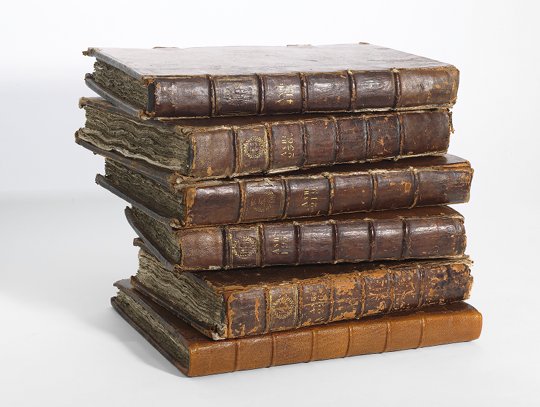What do they look like?

Simon Forman’s casebooks. Forman kept his records as loose notebooks. Elias Ashmole had them bound into annual volumes in the 1670s. MSS Ashmole 234, 226, 195, 219, 236, 411. Copyright Bodleian Library, University of Oxford, 2011. The image below depicts the full run of Forman’s and Napier’s casebooks, assembled from photographs of their spines.
The casebooks are bound into 66 volumes, ranging in size from folio (c. 30cm × 19cm) to octavo (c. 15cm × 10cm), each holding between 250 and 750 pages. Six volumes contain Forman’s records; 55 hold Napier’s; two hold Sir Richard Napier’s; and three volumes of loose papers include assorted records from all of the practitioners. Most volumes are dedicated to a single year. Forman’s run from 1596 to 1601, with additional records from 1603. Napier’s records date from 1597 to 1634. A full list of Forman’s and Napier’s casebooks is provided on this site.
The astrologers kept their records as loose notebooks. Elias Ashmole gathered them into volumes and had them bound in calf, fastened with brass clasps, and embossed in gold with the name of the collection — Ashm., short for Ashmole — and a unique identifying number on the spine.
Why do they survive?
Elias Ashmole (1617–1692) was a great collector of books and manuscripts with a keen interest in astrology, alchemy, natural magic and the history of Britain. Forman’s and Napier’s casebooks survive because Ashmole collected them. This collection has played a major role in shaping how historians understand the history of the occult sciences.
When Forman died in 1611, he left his books and papers to Napier, his protégé. Napier in turn left his papers to his nephew, Sir Richard Napier (1607–1676), also an astrological adept. Sir Richard passed the collection to his son, Thomas Napier (b. 1646), who sold it to Ashmole on his father’s death.
Ashmole had begun collecting books and manuscripts relating to the occult sciences in the 1640s. His collections also included paintings, antiquities and curiosities. He donated his entire archive to the University of Oxford in 1677 and founded the Ashmolean Museum there in 1683. This was the first public museum in Europe. In 1860 the Ashmole Collections of books and manuscripts were moved to the Bodleian Library where they have remained ever since.
The first scholarly accounts of Ashmole’s archive were William Black’s A Descriptive, Analytical and Critical Catalogue of the Manuscripts Bequeathed unto the University of Oxford by Elias Ashmole (1845) (this is a large document which may take some time to download) and W. D. Macray’s Index to the Catalogue of Manuscripts of Elias Ashmole (1866). These remain valuable resources and have been drawn on extensively in the preparation of this edition of Forman’s and Napier’s casebooks.



